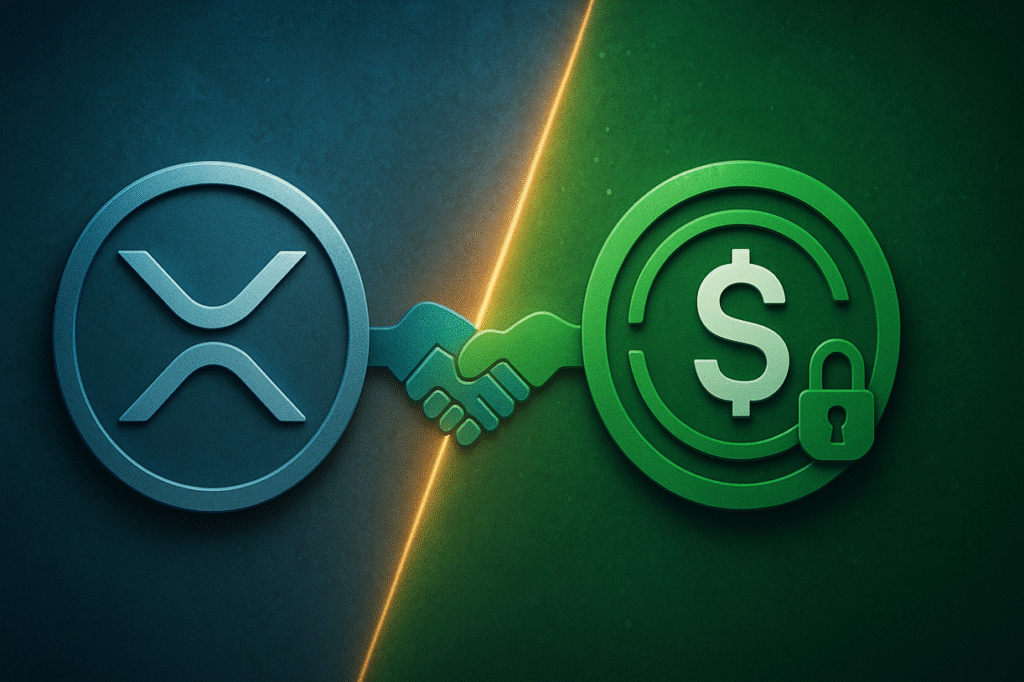In the ever-evolving landscape of digital finance, Ripple continues to carve its niche, navigating the complex dynamics between its core asset, XRP, and new ventures like the RLUSD stablecoin. The recent unveiling of the US dollar-pegged RLUSD has stirred discussions about Ripple’s strategic direction. However, Brad Garlinghouse, Ripple’s CEO, has made it clear that XRP remains integral to Ripple’s operations, even as the company diversifies and expands its financial solutions using various assets. Understanding Ripple’s strategy requires a deep dive into these developments and an exploration of their impact on the cryptocurrency market and potential investors.
Ripple’s Strategy: The Role of XRP and RLUSD in the Digital Economy
Garlinghouse Clarifies XRP’s Core Role Amid New Ventures
During a recent interview with Crypto in America reporter Eleanor Terrett, Garlinghouse addressed the rumors that Ripple’s launch of the RLUSD stablecoin might undermine XRP’s role. “XRP remains central to all that Ripple does,” he asserted, aiming to dispel the misconceptions proliferating on social media. He emphasized that Ripple’s dynamic approach involves leveraging multiple assets, tailored to the specific needs of each transaction corridor’s economic conditions, liquidity, and reliability.
Ripple employs a pragmatic asset-routing logic that is agnostic to any particular cryptocurrency, including XRP. This strategy is driven by variables like currency pairs, liquidity depth, and transaction costs, rather than a commitment to a single digital asset. “Sometimes the best solution is a stablecoin,” Garlinghouse noted, “but there are times when XRP is optimal.” Such flexibility enhances Ripple’s capability to deliver cost-effective payment solutions globally.
RLUSD’s Introduction and Its Significance in Ripple’s Ecosystem
One of the most revealing aspects of Garlinghouse’s discourse was his mention of Ripple’s institutional payment activity in early 2023, where Ripple was responsible for minting 20 percent of all USDC. This underscores Ripple’s commitment to using diverse technological solutions to address distinct institutional needs. Garlinghouse stressed that Ripple’s innovation is driven by the aim of providing comprehensive solutions, rather than merely promoting its native token, XRP.
Ripple’s RLUSD stablecoin complements XRP by offering another avenue for optimizing transaction efficiency. In monetary corridors where a fiat-backed stablecoin like RLUSD offers superior pricing or liquidity, Ripple can direct payments there. Conversely, XRP’s low transaction costs and rapid settlement times make it the preferred choice in other scenarios.
Future Outlook: Scaling Up with XRP and RLUSD
Garlinghouse underscored that Ripple’s primary goal is to expand its market impact, moving from handling “tens of billions of dollars” in transactions to potentially “hundreds of billions or even trillions.” This growth strategy is not solely about XRP’s market dominance but focuses on increasing the overall throughput across Ripple’s platforms. “Having a smaller slice of a vastly bigger pie is a good position,” Garlinghouse remarked, highlighting that Ripple’s success is measured by its market growth rather than XRP’s exclusive use.
Understanding Ripple’s trajectory requires recognizing the complementary roles of XRP and RLUSD in its ecosystem. XRP’s advantages in scalability, speed, and cost are vital, yet the introduction of RLUSD serves to broaden Ripple’s toolkit, enabling better routing decisions based on market conditions.
What is XRP’s primary use in Ripple’s ecosystem?
XRP is predominantly used in Ripple’s ecosystem for facilitating fast and cost-efficient cross-border transactions. Its scalability and low transaction costs make it suitable for high-frequency payment routing.
How does RLUSD impact Ripple’s strategic goals?
RLUSD enhances Ripple’s strategic goals by providing flexibility in payment routing. It allows the company to leverage fiat-backed stability for transactions requiring a stablecoin, optimizing pricing and liquidity conditions.
Why is Ripple not exclusively focusing on XRP?
Ripple’s approach is to deliver the best financial solutions, which sometimes means using multiple assets. By not focusing exclusively on XRP, Ripple can provide adaptive payment solutions tailored to specific transaction needs.
Is the introduction of RLUSD a sign of diminishing focus on XRP?
No, the introduction of RLUSD is not a shift away from XRP but rather an expansion of Ripple’s capabilities. It supports the company’s adaptive strategy, ensuring clients receive the most efficient routing options available.
At the time of writing, XRP is trading at $2.32, reflecting its enduring relevance in the cryptocurrency market. As the world of digital finance continues to evolve, Ripple remains at the forefront, pioneering new solutions and reinforcing the importance of XRP in its diverse financial ecosystem.

